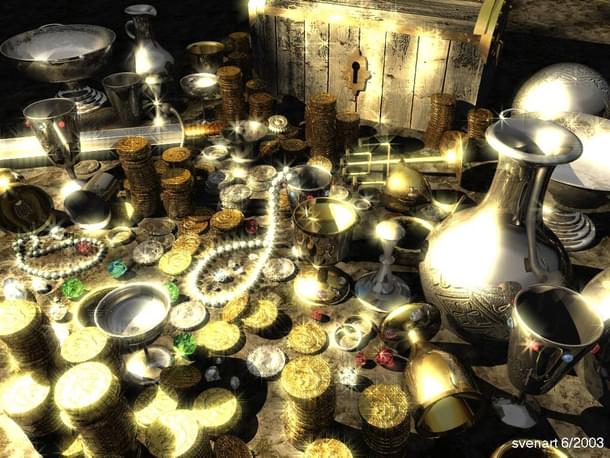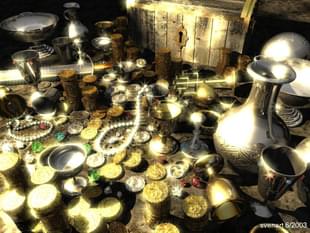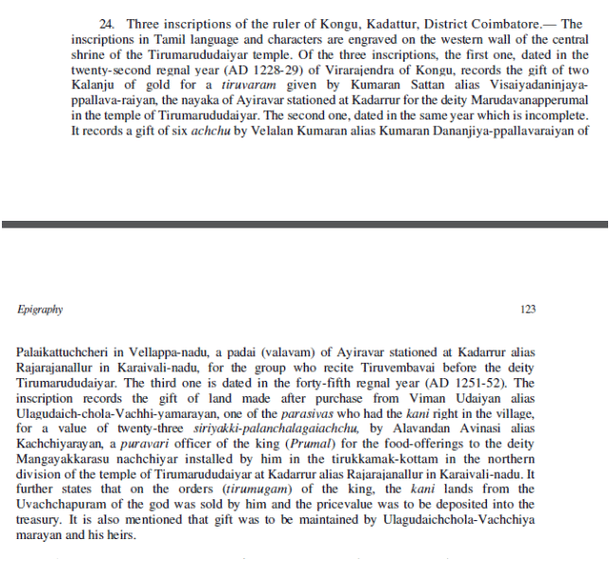Culture
The State and Temple Gold – A look at the past
Kesava
Sep 17, 2013, 02:59 PM | Updated Apr 29, 2016, 01:19 PM IST
Save & read from anywhere!
Bookmark stories for easy access on any device or the Swarajya app.


In Palakollu, a small village in West Godavari district, a curious inscription was found several years ago. The Archaeological Survey of India (ASI) in its 1969-70 Review journal published the details of the epigraph [Page number 53 in ASI Review 1969-70]:

Inscription from Palakollu as noted by ASI review 1969-70
To spell it out – “Rajendrachola I in the year 1034-35 AD exchanged land with Ksheerarama temple for some Gold which he donated again for maintaining lamps in the same temple. The transaction took place under supervision of a body of people, probably vaisyas”. This is not a single isolated instance of such an inscription which contradicts many things that secular media and academia suggest about Hindu temples.
Many Hindu temples are controlled by Governments of India. Devotees, accustomed to their old habits make voluntary offerings to the temples. Government uses these offerings generally for reasons which have no connection to Hindus or Hinduism. When, recently, RBI and Government of India announced that gold from Hindu temples could revive economy, the assault on Hindus and Hindu temples took a new turn. The “secular” media and fake intellectuals pandered opinion in favour of Government stating that temple gold was used by Kings in many situations when needed. This is a myth.
Epigraphical evidence from ASI reviews indicates that Gold was never offered for free by temples. To put it another term, evidence seems to suggest that temples were independent institution. On the contrary, temples used to loan Gold or exchange Gold with land, cattle and other materials required by the temple for several activities which includes annadanam (serving food for destitute and poor), serving students, ascetics and monks etc. The inscription from Palakollu is just one example of several such instances recorded by ASI – a decidedly secular organization.
Individuals used to contribute
Three inscriptions from Thirumarududaiyar temple in Kongu in Coimbatore district record that kings deposited gold in the temple treasury. One of the inscription mentions that an officer of the king sold his own land and deposited the money in the temple treasure and a shrine inside the temple was maintained by him and his heirs. [Page number 132-133 in ASI Review 1982-83]

Details of Inscription from Thirumarududaiyar temple in Kongu, Coimbatore as noted by ASI review 1982-83
This was in 1251-52 AD. From the inscription, it is clear it was all voluntary and had no connection with any temple decree or King’s decree. Compare this to how the Government of India takes money deposited by common people in temples and uses that money per their will with impunity!
Temples used to lend money
In another curious account from Yadiki in Ananthapur district, as recorded by ASI review 1958-59, temple authorities lent money to people. [Page number 64 in ASI review 1958-59]

Inscription from Yadiki as noted by ASI review 1958-59
This inscription indicates that temples were probably an independent institution – completely autonomous in its financial matters. This means that not just individuals but also communities were allowed to borrow money from the temple.
Repaid in means other than money
An account from Brahmadesam in North Arcot district in Tamil Nadu indicates that loans was cleared in exchange of material required to run temple. The ASI review 1981-82 notes this inscription [Page number 90 in ASI review 1981-82].

Inscription from Brahmadesam as noted by ASI review 1981-82
Thus, temples didn’t impose any condition that loan should be repaid in gold or local currency. This inscription also indicates that communities too borrowed money for serving local needs. There are also multiple accounts which indicate that people from different linguistic and regional backgrounds used to construct in temples in different areas.
According to some accounts, loans were cleared through exchange of land, cattle or other materials as well. Some accounts indicate that kings used to revoke taxes so that citizens could take care of the local temples. Several accounts indicate that villages used to contribute by collecting money for a special occasion for organizing specific events*.
The significance of the epigraphical accounts
Several things become clear from epigraphical evidence in ASI reviews:
- Kings donated to temples
- Individuals – sometimes women from different communities too – donated to temples
- Communities and Villages donated to temples – voluntarily in many occasions
- Taxes from some ports were diverted to temples
- Temples loaned gold
Points 1 and 3 are well known and accepted by many historians too albeit citing the reason as religiosity or ritualistic duty.
Point 4 is not discussed much for obviously “secular” reasons.
Point 2 is vigorously contested despite evidence – some inscriptions even mention that ladies from Brahmin community (the community which is supposed to have oppressed women with iron fist of male chauvinism) donated to temples, which could only mean that it was property owned by them as individuals.
In the matter of using temple gold, point 5 is of significance. Epigraphical accounts – a sample of which were discussed in this article – make it abundantly clear that King or Government of the time didn’t make fake justifications or false promises but completed transactions through exchange of material required by the temples. In many cases, a body was constituted to supervise such transactions.
Temples were always a method of long term insurance for state apparatus to handle unforeseen incidents. Such an application of temple and its reach among people was possible only because temples were independent institutions. Post British invasion, it turns out that Government only took from temples but never gave anything back – much like what Hindus are facing today.
Therefore, before “ordering” temples to help Government in reviving economy, probably Government of India should explain what they have to offer – land or other material, guarantee of complete autonomy and independence from Government., through a constitutional amend etc. Until such a time comes when Government can offer these guarantees, Government of India has no right to seek temple resources.
Government of India should be mindful of the fact that people are aware that neither Islamic nor Christian institutions can be forced even to take a public audit, let alone donate for reviving economy, while Hindu temples continue to face serious assault on its resources in the name of social justice. If they continue to assert their power, it is nothing short of outrageous and repercussions could be quite serious.
*A compilation of all the epigraphical evidence of donations made to or by temples presented in ASI reviews is currently in the making and shall be posted on CRI as soon as it is ready.





